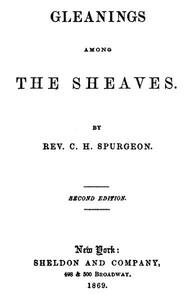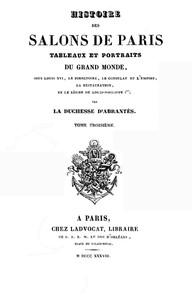|
|
Read this ebook for free! No credit card needed, absolutely nothing to pay.Words: 125675 in 41 pages
This is an ebook sharing website. You can read the uploaded ebooks for free here. No credit cards needed, nothing to pay. If you want to own a digital copy of the ebook, or want to read offline with your favorite ebook-reader, then you can choose to buy and download the ebook.

: Experiments on Animals by Paget Stephen Lister Joseph Baron Author Of Introduction Etc - Vivisection; Physiology Technique@FreeBooksWed 07 Jun, 2023 He found also, by experiments, that the coagulation of the blood in the tube could be prevented by filling one part of the tube with a saturated solution of sodium carbonate. The tube, thus prepared, was connected with the artery by a fine cannula, exactly fitting the artery. With this instrument, Poiseuille was able to obtain results far more accurate than those of Hales, and to observe the diverse influences of the respiratory movements on the blood-pressure. He sums up his results in these words:-- And he adds, in a footnote:-- "When I say that this force is the same over the whole course of the arterial system, I do not mean to deny that it must needs be modified at certain points of this system, which present a special arrangement, such as the anastomosing arches of the mesentery, the arterial circle of Willis, etc." Later, in 1835, he published a very valuable memoir on the movement of the blood in the capillaries under different conditions of heat, cold, and atmospheric pressure. "La circulation du sang est un des sujets pour lesquels la m?decine a le plus besoin de s'?clairer de la physiologie, et o? celle-ci ? son tour tire le plus de lumi?re des sciences physiques. Ces derni?res ann?es sont marqu?es par deux grands progr?s qui ouvrent aux recherches ? venir des horizons nouveaux: en Allemagne, l'introduction des proc?d?s graphiques dans l'?tude du mouvement du sang; en France, la d?monstration de l'influence du syst?me nerveux sur la circulation p?riph?rique. Cette derni?re d?couverte, que nous devons ? M. Cl. Bernard, et qui depuis dix ans a donn? tant d'impulsion ? la science, montre mieux que toute autre combien la physiologie est indispensable ? la m?decine, tandis que les travaux allemands ont bien fait ressortir l'importance des connaissances physiques dans les ?tudes m?dicales." Marey's sphygmograph was not the first instrument of its kind. There had been, before it, H?risson's sphygmometer, Ludwig's kymographion, and the sphygmographs of Volckmann, King, and Vierordt. But, if one compares a Vierordt tracing with a Marey tracing, it will be plain that Marey's results were far advanced beyond the useless "oscillations isochrones" recorded by Vierordt's instrument. Beside this improved sphygmograph, Chauveau and Marey also invented the cardiograph, for the observation of the blood-pressure within the cavities of the heart. Their cardiograph was a set of very delicate elastic tambours, resting on the heart, or passed through fine tubes into the cavities of the heart, and communicating impulses to levers with writing-points. These writing-points, touching a revolving cylinder, recorded the variations of the endocardial pressure, and the duration of the auricular and ventricular contractions. "On peut s'assurer de l'innocuit? de ce premier temps de l'exp?rience en examinant l'animal, qui n'est nullement troubl?, qui marche et mange comme de coutume. En comptant le chiffre du pouls, on trouve quelquefois une l?g?re acc?leration, surtout dans les premiers instants; mais les mouvements du coeur sont toujours r?guliers, et donnent, ? l'auscultation, des bruits d'un caract?re normal." It is impossible here to describe the subsequent study of those more abstruse problems that the older physiologists had not so much as thought of: the minutest variations of the blood-pressure, the multiple influences of the nervous system on the heart and blood-vessels, the relations between blood-pressure and secretion, the automatism of the heart-beat, the influence of gravitation, and other finer and more complex issues of physiology. But, even if one stops at Marey's book, now more than forty years old, there is an abundant record of good work, from the discovery of the circulation to the invention of the sphygmograph. THE LACTEALS It is to be noted that Asellius and Pecquet, both of them, made their discoveries as it were by chance. Unless digestion were going on, the lacteals would be empty and invisible; and, on the dead body, lacteals, receptaculum, and thoracic duct would all be empty. For these reasons, it cost a vast number of experiments to prove the existence, and to discover the course, of these vessels. Once found in living animals, they could be injected and dissected in the dead body; but they had been overlooked by Vesalius and the men of his time. "Up to this point, we have seen English, Italians, and French working together, with more or less success and genius, to trace the true ways of blood and chyle: there is yet one field of work to open up, the lymphatics of the body. The chief honour here belongs, without doubt, to the Swede Rudbeck, though the Dane Bartholin has disputed it with him, with equal acrimony and injustice." Free books android app tbrJar TBR JAR Read Free books online gutenberg More posts by @FreeBooks
: Fletcher of Saltoun by Omond George W T George William Thomson - Fletcher Andrew 1655-1716 Famous Scots Series@FreeBooksWed 07 Jun, 2023

: Gleanings among the Sheaves by Spurgeon C H Charles Haddon - Devotional literature@FreeBooksWed 07 Jun, 2023
|
Terms of Use Stock Market News! © gutenberg.org.in2025 All Rights reserved.






